Check Engine Light After Rain: Why It Comes On (And What To Do About It)
Have your noticed your car check engine light come on after raining? Are you wondering why this happens and what it says about your car? If yes, this guide is for you.
Check engine light after rain usually illuminates due to engine misfire caused by a defective spark plug or ignition coils. Simply replacing the spark plug, plug wires, and even the ignition coils will get everything will get back to normal.
Our guide below will shed more light on why your check engine light (CEL) comes on every time it rains and helpful tips on how to fix this issue.
Why does your check engine light go on after it rains?
As we have just stated above, the check engine light coming one after rain could be due to a cylinder misfire caused by a defective spark plug.
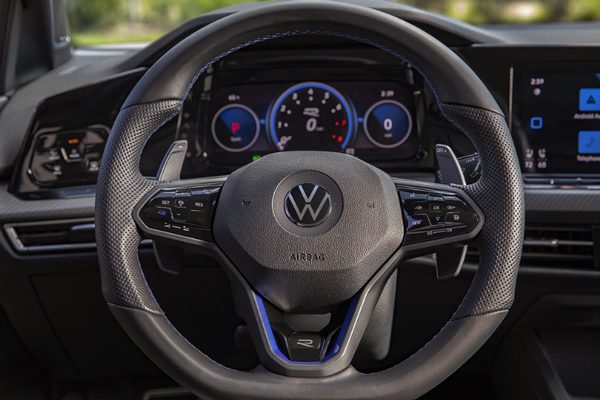
When rainwater finds its way into parts of your engine where it shouldn’t be—and there’s an underlying electrical problem under your hood—this will set off many of your car’s sensors to alert your car of a problem that needs to be fixed.
The perfect example is the water dripping into the spark plugs after it has rained. The plugs can give you a hell of problems in relation to the check engine light.
If your spark plug wires have gotten old, they tend to develop cracks which then tend to let out little bursts of electricity. And this will definitely send your CEL blinking!
If you find out that your spark plug and wires need to be replaced, you may also want to check the condition of the ignition coils too and whether they need to be replaced as well. A bad coil pack tends to set off the light whenever water leaks into it.
Sometimes, the CEL showing up after rain may have something to do with the oxygen sensor. This sensor measures the quantity of oxygen in your car’s exhaust system.
A faulty O2 sensor will not only lead to bad fuel economy but also causes damage to your vehicle spark plugs as well as the catalytic converter.
Talking of the catalytic converter, it usually fails if there’s another issue. The problem could be a faulty oxygen sensor or defective spark plugs and plug wires.
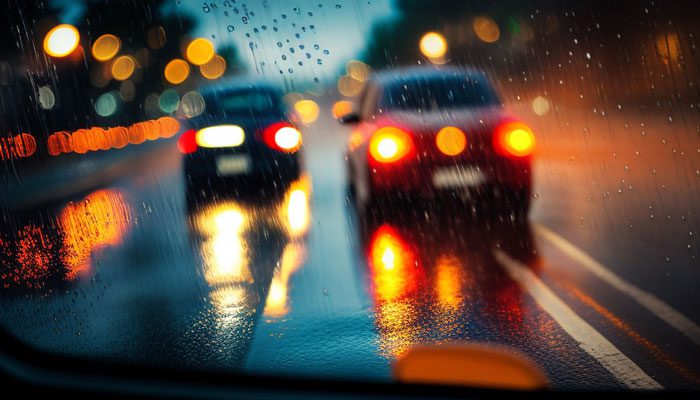
Unluckily, catalyst converter damage is costly, so you need to replace those spark plugs and the oxygen sensor on time!
NOW, if you don’t seem to find any of the above issues and your car runs just fine, it could be just a false signal. Nothing could be wrong with the vehicle.
If you’re lucky, the light can resolve on its own. But sometimes, it stays around and doesn’t seem to go away. So what should you do to resolve the light? Let’s discuss this next…
What should you do if check engine comes on after rain?
Whenever the check engine light comes on after rain, you should start by examining the spark plugs for any underlying problems.
If the light still doesn’t go away, check your vehicle distribution cap, and the plug wires and ensure they’re properly plugged into the head. If there’s no problem with the ignition stuff, then you move on to checking other plugs and connections of your vehicle.
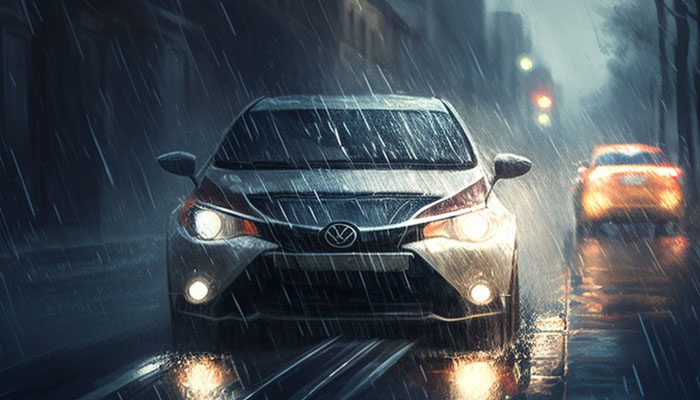
A simple way to confirm if the plug wires are problematic involves opening your car hood in the darkness and then starting the engine. Watch as the engine runs; if you see a spark coming out of the coil park or plug wires, there you have your culprit!
If you can’t see anything, consider spraying plain water over the spark wires and coil park—this can also cause the arch to be visible, and you may even heat it (usually a light snapping sound).
However, you shouldn’t touch the spark wires when your engine is running. Doing so can easily shock you, even when the wires have insulation!).
If you find out any of these parts are problematic (i.e., the spark plugs, plug wires, and ignition coils), consider replacing them with new ones.
This is a pretty simple DIY task and only involves using a couple of wrenches. It might take you around 1-2 hours if you’re not familiar with your car engine layout.
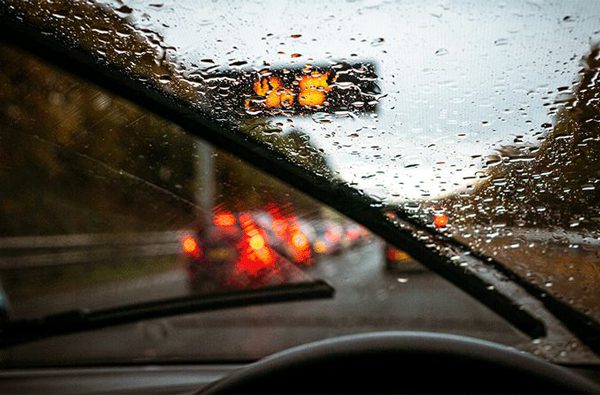
You may also consider using a scanner to diagnose the error code being displayed. This will help you point out the specific wiring or plug causing the issue, so you can replace it instead of replacing all the wires and plugs.
When should you visit the mechanic?
If you don’t seem to uncover the problem by yourself, you can take your vehicle to your local repair shop for further help. If replacing the spark plugs and wires or the coil packs doesn’t solve things, you’ll need to visit a professional.
A professional mechanic will be able to diagnose your engine for all these possible causes and find the culprit. Afterward, they should be able to give your car a fix that makes the check engine light go away.
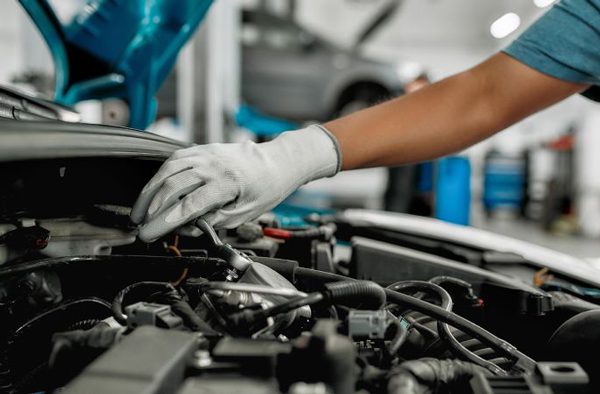
The mechanic will also use a scanner to interrogate the error code that’s causing the CEL to come on and do a diagnosis based on this code info. This way, they’ll be able to do the necessary repairs and get your car back to normal.
Should you take your car to the dealership?
Taking your car to the dealership for a diagnosis is a good idea if your car check engine light comes on after rain. This is because the dealership may have vehicle-specific tools that can help diagnose and fix the issue.
However, you may want to go to your mechanic first to see if they can fix the issue. If they aren’t able to help, then you can go to the dealership for further help.
Why does your car sputter and check engine light blink after rain?
Besides the check engine light coming on, you might also notice your car engine sputtering after rain.
If this is your case, the distributor cap could be the culprit.
Inspect the wiring that goes to the distributor for any frays or cracks. Also, check if the distributor cap seal is present and in good condition.
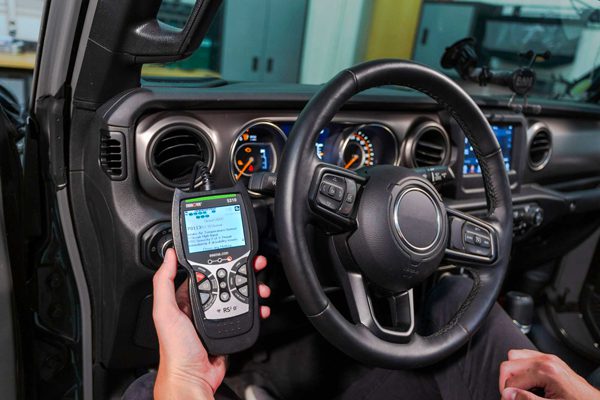
If you find your distributor having any issues, we advise you to replace it with a new one and the issue should go away.
We also advise you against driving when the check engine is on and your car is shaking.
This is one of the signs of a severe misfire, which can cause costly damage to your catalytic converter as well as other components.
Steady vs blinking check engine light after rain: Which is worse?
Your engine check light can appear in steady/solid or flashing/blinking modes. While both signals indicate an engine issue, one carries more weight than the other.
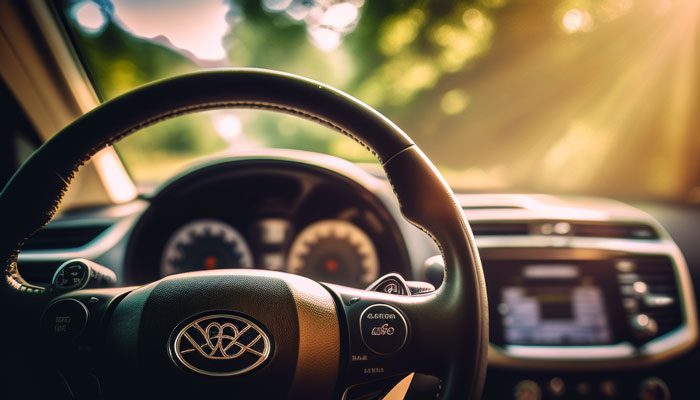
If your CEL is flashing, it means you have a more serious underlying issue to deal with. It means that you have a critical issue with your car engine that you’d want to handle as soon as possible!
Steady check engine light, on the other hand, means that the issue isn’t that serious. You might even find it’s a minor issue like your gas cap not being tightened completely. You can drive for a long time, say a year, with such an issue without causing any serious harm to your vehicle.
Nevertheless, we always advise you to find out what causes your engine check light to illuminate and have it fixed.
How long can you drive with the check engine light on after rain?
The rule of thumb is: If the check engine light comes on, you should NOT continue driving the car.
Check engine light blinking after rain is a serious warning, an emergency, that alerts you to stop driving your vehicle due to an engine misfire.
So, you should simply your car off the road, stop, and then shut off the engine quickly and safely. We suggest that you don’t drive your vehicle until the issue gets fixed.
If you continue driving your vehicle with the check engine light blinking, you’ll only be causing costly damages to some more important components that’ll cost you up to thousands of dollars in repair costs.
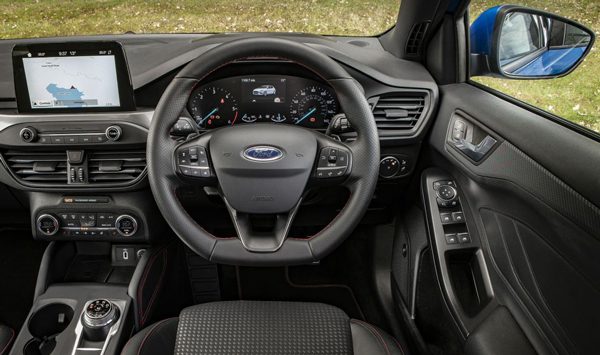
A good example is a catalytic converter which can get easily damaged if you continue driving with CEL on, attracting expensive repairs.
However, if the CEL is steady, the problem might not be that serious. You can continue driving your car to your local auto repair store to have it diagnosed and fixed for the underlying issue.
If you’re experiencing issues with your check engine light after rain, it could be a sign of water damage in your vehicle. However, other issues can also trigger the light to come on, such as running out of gas or getting gas. To help you troubleshoot and fix these issues, we’ve created articles on what to do when the check engine light comes on after running out of gas and what to do when the check engine light comes on after getting gas. These articles provide step-by-step guides and helpful tips to help you diagnose and fix the issue, so you can get back on the road with confidence.FAQs:
1. Can heavy rain cause check engine light?
Yes, heavy rain can make your check engine light come on when the rainwater gets into parts of the engine that aren’t supposed to get wet. In most cases, replacing the spark plugs, plug wires, and coil packs helps solve the issue.
2. Can moisture cause check engine light to come on?
Absolutely! When moisture gets into parts of your engine it isn’t supposed to, then your check engine light will come on. If you notice your CEL coming on every time it rains, this means the moisture from rain is interfering with your engine parts. Inspect the spark plugs and all their wires and replace them if they’re overdue. Also, inspect the ignition coils and replace them as well if they’re problematic.
Conclusion
The check engine light coming on after rain is a sign of an underlying issue with your vehicle’s engine. The most likely cause for the light to come on is water getting into areas of your engine like the spark plugs that aren’t supposed to get wet.
When you experience this problem, you don’t have to panic. Instead, follow our advice in the above guide on how to diagnose and fix the issue to make the light go away and your car will start running smoothly again.

